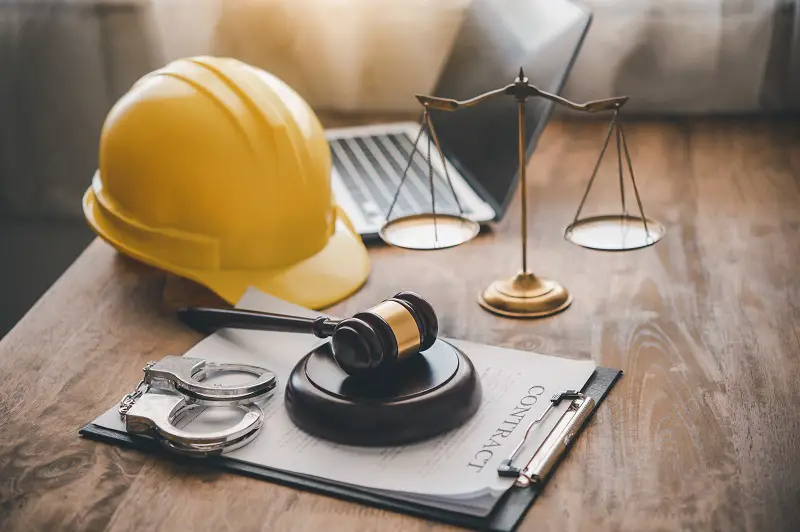Companies and clients alike want to resolve their construction claims. The claims review process reviews the claims’ merits to ensure a favorable resolution is reached.
However such is never always the case. There are instances where claims are denied. Those pursuing the claims need to understand what happens next. The next step may be mediation. Those who wish to initiate mediation need to be sure they are working with a proper administering body.
For companies and entities stateside, they can consult with either the American Arbitration Association or JAMS.
Those who are filing construction claims need to know if the contract requires either litigation or arbitration. This usually depends on the claim. Yet the filers may want to formally initiate either arbitration or litigation to stay the process, pending compliance with any requirements for meditation.
Which kinds of construction claims are most common?
Each kind of construction claim is different. It is wise for construction companies, contractors, and other parties involved in construction to understand their claims first, and then push forward the application.
#1 – Payment Claims
If the parties involved are owed money, then they will need to create an absolutely perfect construction lien. Alternatively, perfect payment bond rights can be made too. It is key to know which of the rights present are properly preserved from the beginning and then are fine-tuned if money is owed.
Failure to do so is itself a large-scale error. Each jurisdiction has a different requirement to preserve and perfect both a construction lien and payment bond rights. It is important they know about these very rights.
#2 – Claims due to injuries and needs for safety
Safety is key in the construction industry. Injuries take place based on the risks involved but the goal should be to reduce injuries and comply with all existing safety protocols. If non-compliance of such is observed it should be stopped immediately.
Each construction company should be aware of all rules and regulations OSHA has regarding their scope of work. They should also know any additional safety protocols which are required for the project (including the company’s own protocols, and standards).
The COVID-19 pandemic brought more safety rules and regulations. These regulations were a necessity. This is why construction companies need to be sure that they are well aware of all rules and regulations, all safety protocols are followed on the job and all team members are also aware of the protocols and regulations relevant to their work’s scope.
In case an injury takes place, they must be sure that they properly and timely notify the relevant people and authorities to ensure the injured workers are treated on time and the situation is handled well. A detailed safety report needs to be made and steps need to be taken to avoid more injuries and safety violations from happening.
#3 – Differing conditions of construction sites also result in claims
A lot of contracts have clauses for differing site conditions or changed conditions of sites. The clause covers latent physical conditions on construction sites that differ in material terms from those identified in the contract documents. They are known as Type I differing site conditions claims.
Type II differing site conditions claim is filed when conditions differ in material terms from the conditions encountered in ordinary terms.
If construction companies encounter what they consider as a differing condition of a construction site, they must ensure they have properly served the notice that documents the condition plus any additional expenses forecasted and incurred due to the differing site condition.
In notable terms, a construction contract will usually include terms and areas indicating the site was visited, needed to be tested carried out, and in line with the scope of work. It even has areas that warrant whether the site was suitable for work or not. Whatever is written there needs to be carefully considered when it comes to a differing site conditions clause.
#4 – Claims due to scheduled delays
Delays in construction are unfortunately unavoidable. If construction companies face delays they should notify contractors and other parties involved of both the delay and the work being affected and delayed. They should even indicate the potential cause of the delays with documents. In construction, productivity is colloquially known as time and money spent wisely.
Sending notices on time is quite important. This can have an impact on the company’s efficiency due to manpower or equipment being used (and from their standpoint). Both contractors and subcontractors need to know this as their profitability gets affected in case the usage of both manpower and equipment (or either) exceeds limits.
Often at times, contracts contain a clause known as ”no-damage-for-delay” and this could impact certain delay-type damages which are sought. Yet companies can still ensure they give timely notice. That can help them preserve their rights. Else it will all go down the drain.
The timely notice also needs to be submitted so that companies can provide documentation that can prove the cause of the delay, in case delay damages are sought against them.
#5 – Claims arising due to suspension and termination of work
Contracts often contain provisions for suspension and termination of work. Companies should hence know what comprises a cause for work suspension and termination. Moreover, they should also be aware of any written notice to fix requirements.
Dispute avoidance experts also stress to both construction companies and contractors what is part of a termination for convenience clause, and which kind of damages are recoverable if workers, contractors, subcontractors, or all (including the company) are removed without any due cause.
On the same pattern, companies should be able to determine whether the other party can suspend performance. They should also determine the time period and whether or not the suspension allows equitable adjustment of the contract sum before work resumes. If the contract is suspended for a certain number of days, they’ll want to know if they have the right to terminate the contract or not.




